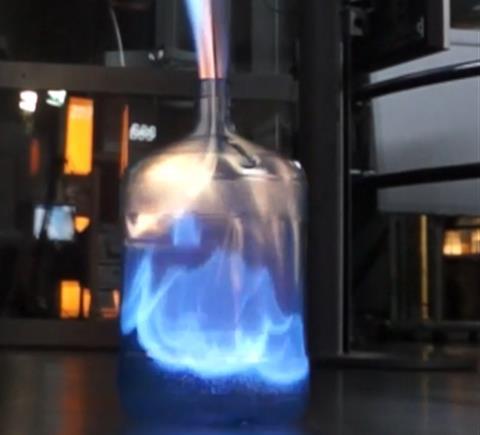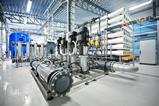Meet Wesleigh Dawsmith, a DT technician and STEM ambassador who is a passionate advocate for science outreach

Wesleigh Dawsmith joined the technician team at The Ronson Jewish Community Secondary School, London, in 2020 after completing a PhD in medical engineering at Queen Mary University of London. His main responsibilities are preparing equipment for practical work and ensuring the experiments run smoothly. He was a technician in the school’s chemistry lab for three years before recently switching to the design and technology (DT) department.
Wesleigh also leads his school’s extracurricular science, technology, engineering and mathematics (STEM) programme. ‘My passion is to inspire young people in STEM,’ he explains. Wesleigh runs two weekly STEM clubs, one of which is for pupils in the school’s autistic division, as well as the school’s CREST Award scheme. He also coordinates activities in the school for special STEM events such as Chemistry Week, Biology Week and British Science Week.
When I put the burning splint in the bottle and the ethanol ignites, the kids’ faces always light up
In 2022, Wesleigh received the Royal Society of Chemistry’s Early career prize for excellence in secondary and further education for going above and beyond to support the delivery of high-quality practical work, and for championing ways to make practical work inclusive.
When not at school, Wesleigh is a regular volunteer at the Science Museum and Royal Institution. He is an object handler in the Science Museum’s medicine galleries, helping visitors of all ages interact with and learn about the items on display. At the Royal Institution, Wesleigh is an assistant for its Saturday mathematics masterclasses for year 5 (9–10 year-old) primary students.
How did you get interested in STEM outreach?
I started out as a STEM ambassador for my university’s engineering department while completing my undergraduate degree and PhD, helping out with school and local community events. I also really enjoyed it – so much so that I went for a career where I could continue to carry out STEM outreach programmes in my spare time.

What is your favourite STEM club experiment?
At the weekly STEM clubs we do everything, including all the classic chemistry experiments such as elephant toothpaste and film canister rockets. My favourite is the whoosh bottle: I turn off the lights, light the match and get all the kids hyped up. Then, when I put the burning splint in the bottle and the ethanol ignites, the kids’ faces always light up, much like the inside of the bottle.
How does the STEM club for autistic students differ from the other club you run?
The club for autism-only students is a bit quieter, more relaxed and a lot less hectic due to lower student numbers. I am autistic and have intentionally created an environment that the students and I find easy and enjoyable.
Tell us a bit about the CREST Awards scheme.
It’s the STEM equivalent of the Duke of Edinburgh’s Award. It gives the students the chance to learn skills not taught in school, which they can talk about on their university applications and interviews. I run the Silver CREST research group for year 12s (16–17 year-olds), where I support them with a research topic of their choice. Last year, I had a student 3D print and launch a plane in the sports hall. There were also quite a few psychology projects, including one investigating if it’s possible to work out if dice are loaded. I also run a Bronze CREST club for younger students who are currently building and programming a self-driving robot with a Raspberry Pi.
What are the best and worst parts of your job?
Seeing the kids’ faces when they see an experiment that inspires them. That for me is what makes the job worthwhile. But when I know that a student would love to be attending a club and can’t due to external factors – that’s the worst!
What’s your favourite tool in the DT workshop?
Reverse tweezers – the ones you push to open up. They’re perfect for working with fiddly pieces and help me with a lot more jobs than any other piece of equipment.
What do you keep in the pocket of your DT workshop overalls?
A pen, but not just any old pen – I use a Fisher space pen. It’s got a pressurised ink cartridge, so it can write on pretty much any surface, even under water.
What’s your earliest memory of science?
My mum taking me to the Science Museum and seeing the big red wheel at the entrance going round and round.
Did you have any particularly inspiring teachers at school?
Yes, my form tutor who was also my DT teacher, Miss Lelliott. She always believed in me, always pushed me to be as creative as possible and was always patient with me.
If you could send a message to your younger self, what would it be?
To consider doing an apprenticeship rather than going to university. You can gain a lot of work experience and life skills at a younger age through an apprenticeship. I now advocate for others to really consider apprenticeships as an alternative to university.
Where do you see yourself in 10 years’ time?
I hope to still be doing STEM outreach and inspiring young people. I might not still be working in a school, though; I’d like to go somewhere else and try new challenges.














No comments yet